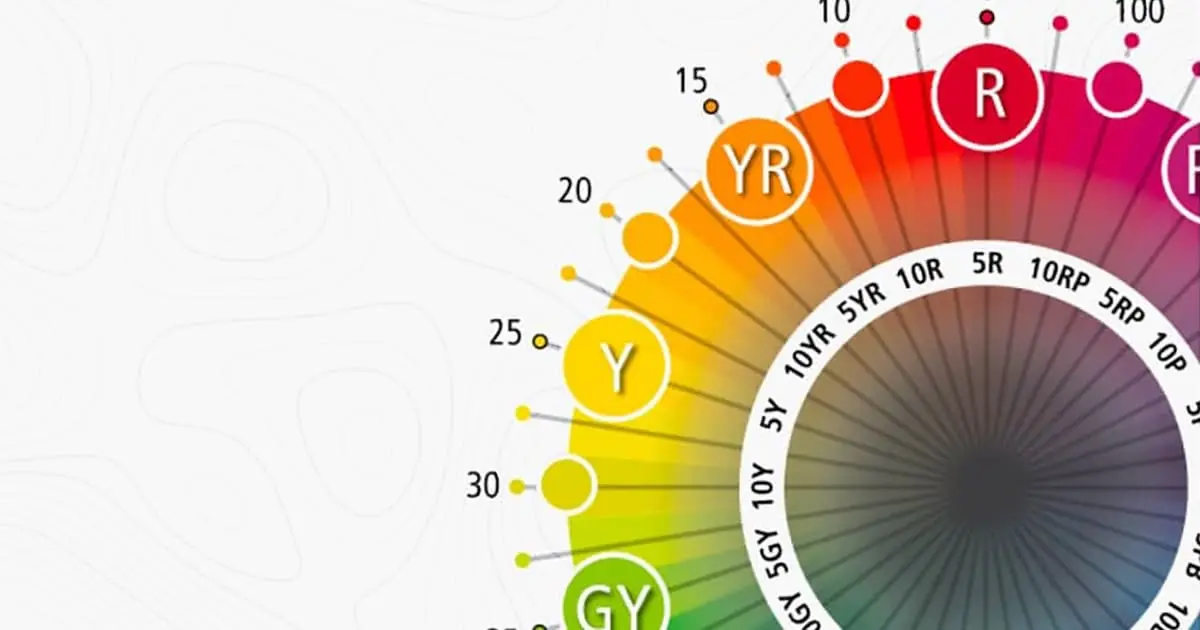Understanding the Munsell Color System in the Munsell Color Book
The Munsell color system is color theory based on a three-dimensional model. Each color has three components: hue (color or shade itself), value (lightness/darkness), and chroma (saturation). This numerical system is designed to provide logical, uniform steps for each of the three components.
Click here to download our Munsell Soil Reference Guide.
Developed by scientific thinker and artist Albert Munsell, the system was created to provide specific and consistent descriptions of color and is designed to work for a variety of industries.
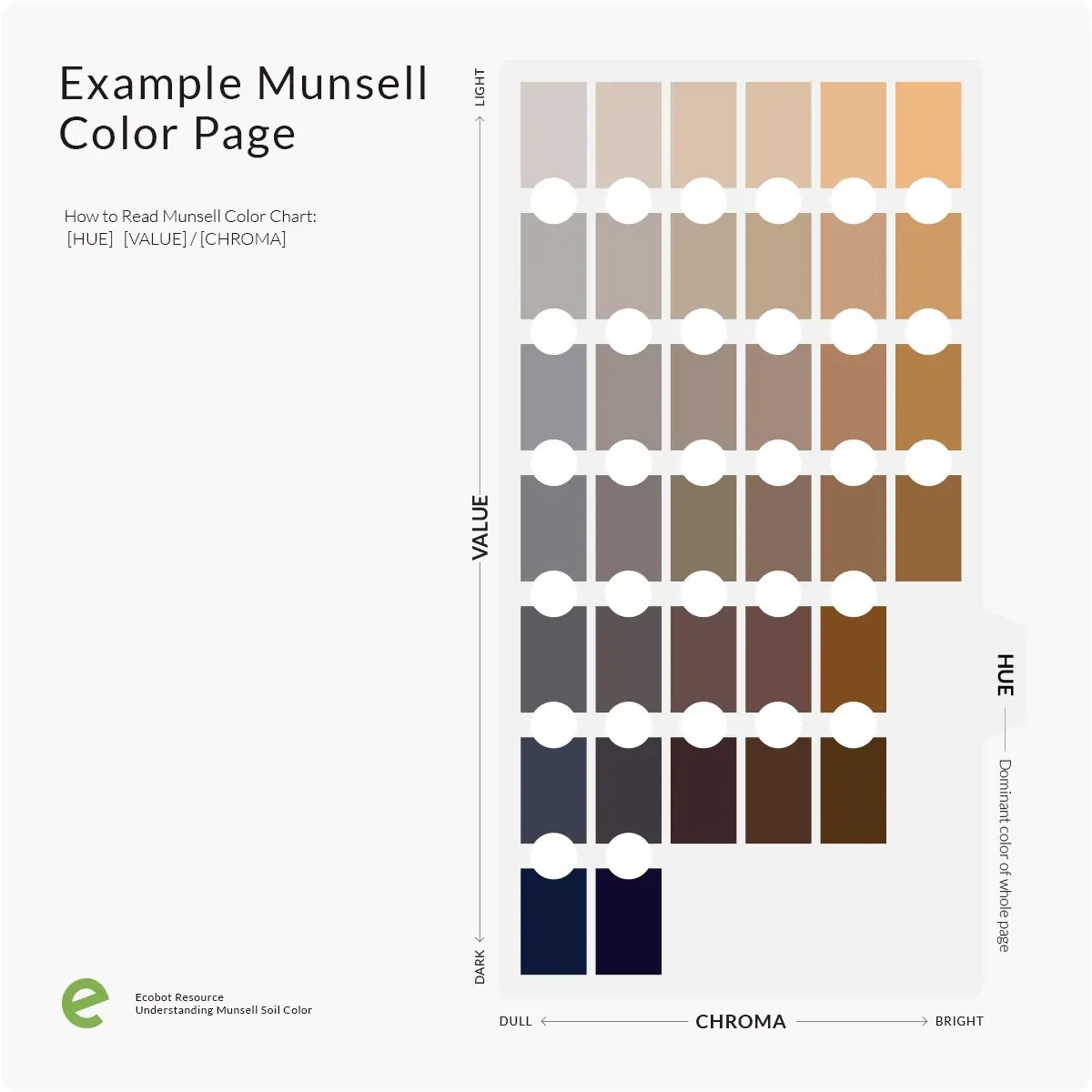
Munsell colors written are as HUE VALUE / CHROMA
Hue refers to the color and is denoted by a letter code. Value refers to the lightness or darkness of a color.
The value scale is vertical with the darkest at the bottom and the lightest at the top. From bottom to top, values are numbered in increasing increments. Numerically, a value of 2 is darker than a value of 4.
Chroma refers to the saturation or brightness of a color. The chroma scale is horizontal with the dullest or weakest at the far left and the most saturated or brightest at the far right. From left to right, the number representing chroma increases, meaning that a chroma of 1 is duller or less saturated than a chroma of 6.
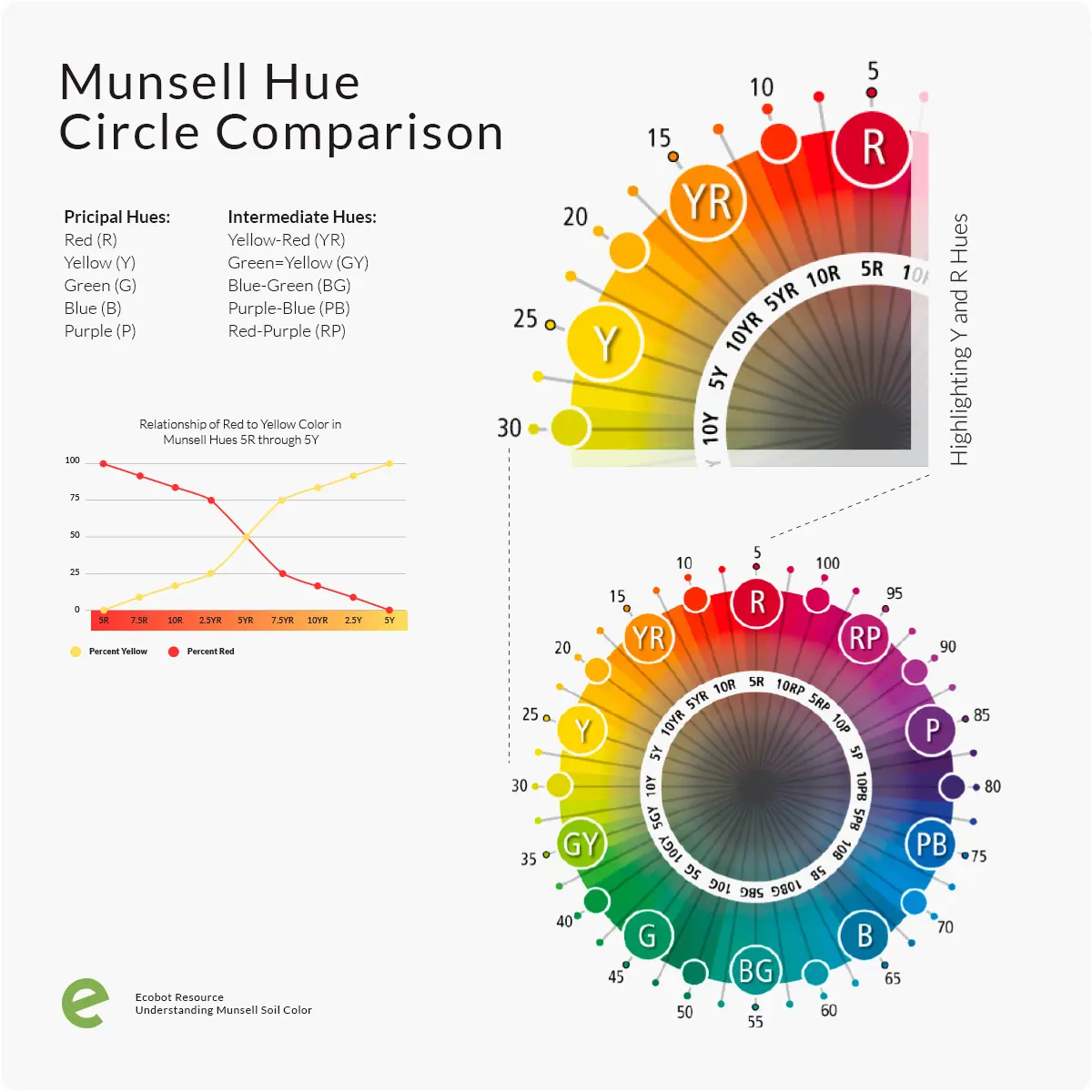
Munsell Hue Circle Comparison The Munsell Hue Circle displays the relationship of one color (or hue) to another. A letter code is provided for each color. The following hues are included in the Munsell Soil-Color Book:
- Principle Hue: Red (R)
5R, 7.5R, 10R - Intermediate Hue: Yellow-Red (YR)
2.5YR, 5YR, 7.5YR, 10YR - Principal Hue: Yellow (Y)
2.5Y, 5Y, 10Y - Intermediate Hue: Green-Yellow (GY)
5GY, 10GY - Principal Hue: Green (G)
5G, 10G - Intermediate Hue: Blue-Green (BG)
5BG, 10BG - Principal Hue: Blue (B)
5B, 10B - Intermediate Hue: Purple-Blue (PB)
5PB - Neutral (N)
N represents the absence of color (or hue)
Gleyed Colors Gleying occurs when the iron present in soil is often reduced leaving behind a characteristic bluish or greenish gray color. Gleyed colors have a value equal to or greater than 4 on either of the Gleyed Matrix pages in the Munsell Soil-Color Book.

Redoximorphic Features Contrast Determination
Many indicators of hydric soil require distinct or prominent redox features (e.g. A11, A12, A14, A16, S5, S11, F3, F6, F8, F12, F16, F19, F20, and F21). To determine if redox within a matrix is considered distinct or prominent, the hue, value, and chroma of both colors must be compared. Delta (Δ) refers to the difference between.
- Δv = Difference in value
- Δc = Difference in chroma
Understanding Delta Hue (Δh) Use the diagram to help calculate Δh. The difference between each line is equal to Δh of 1.

Chart for Estimating Proportions
Use this chart to more consistently quantify the percent of redox concentrations, depletions, or mottling in the soil.

Soil Texture Triangle
The soil texture triangle provides a visual representation of the relationship between clay, silt, and sand concentrations in soil.
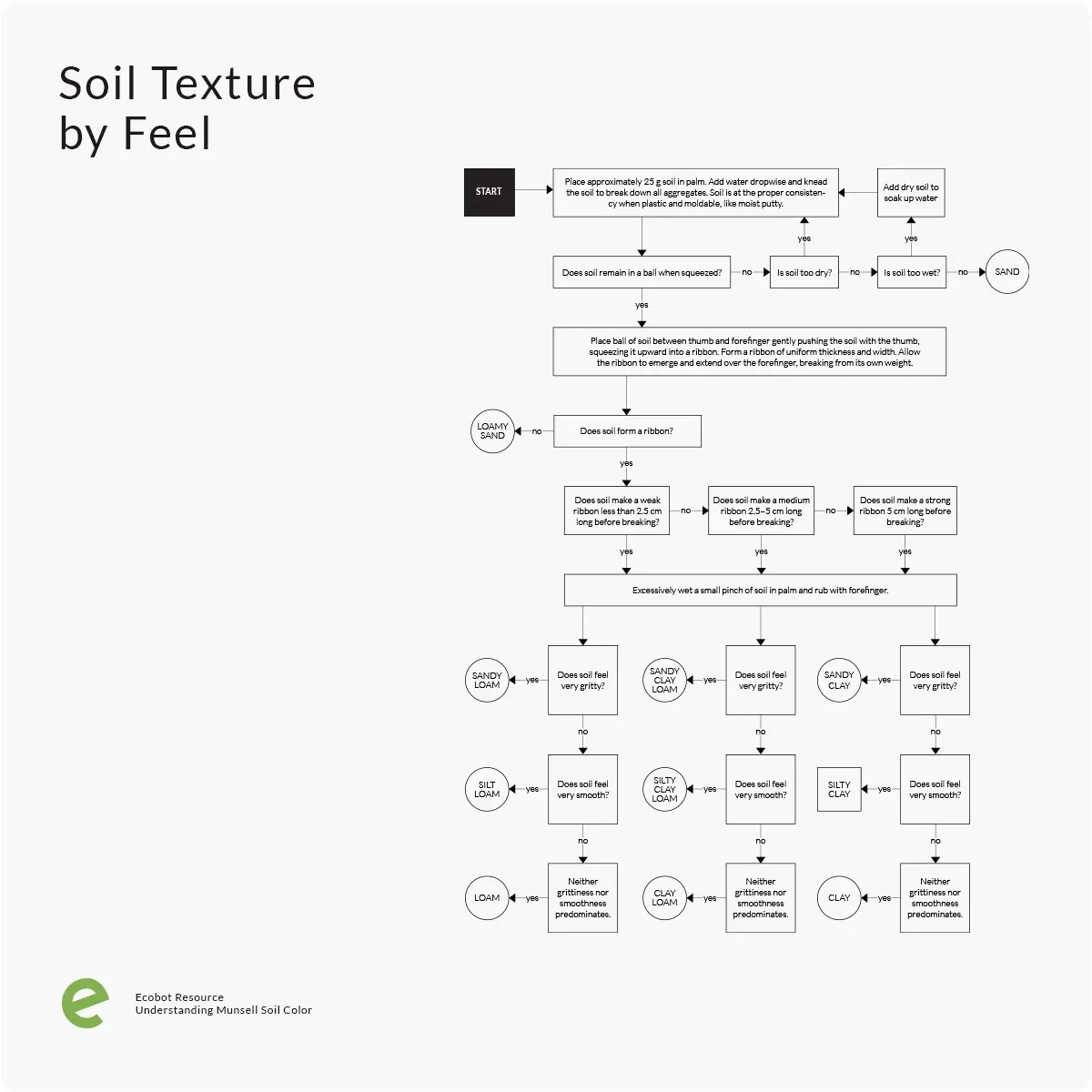
Soil Texture by Feel This flowchart uses an incremental approach determining the correct soil texture of a sample while in the field.
We know soils.
Ecobot makes soil data entry and QA/QC intuitive and accurate.
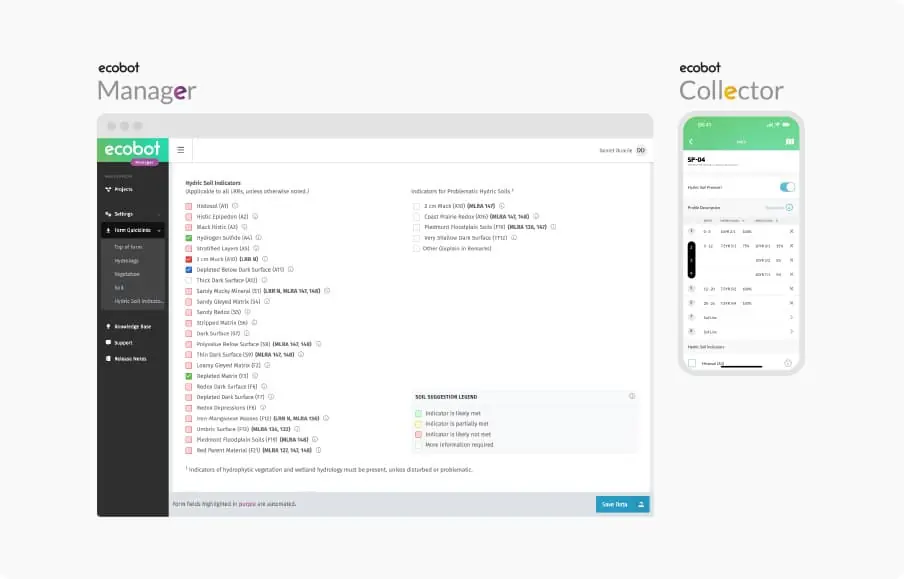
The latest version of Ecobot Collector for iOS and Android provides new ways to manage multiple matrix and redox colors. Ecobot Manager improves your accuracy with soil indicator suggestions.
Citations:
- Munsell Color Theory & Albert H. Munsell Fundamentals of Color. Munsell Color System; Color Matching from Munsell Color Company (2014). Available at: https://munsell.com/about-munsell-color/.
- Schoeneberger, P.J., D.A. Wysocki, E.C. Benham, and Soil Survey Staff. 2012. Field book for describing and sampling soils, Version 3.0. Natural Resources Conservation Service, National Soil Survey Center, Lincoln, NE.
- Munsell Color, X-Rite. (2009). Munsell Soil Color Book (2019 Production).
- Guide to Texture by Feel. USDA, NRCS.

